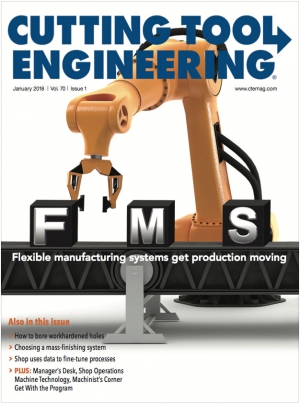Happy 2018! Whether or not you believe in New Year’s resolutions, starting any new year with optimism and a positive attitude is a worthy idea and can’t hurt anything. An important element is applying key lessons learned from the previous year.
One of the most important lessons I learned in 2017 was how to deal with unprofitable customers and even cut ties with customers that were profitable but demanding, disruptive and otherwise difficult. I imagine that virtually all shops have experienced both types and need an effective system to screen customers and identify red flags to achieve a brighter, more profitable future.
Our market has been generally down during the past 2 years, although there is light at the end of the tunnel. Unfortunately, a down cycle can be a rationale for saying yes to some clients or jobs you otherwise wouldn’t have taken. We certainly have. But doing so also increases the likelihood you’ll cross paths with unfamiliar companies and products. It’s critical to vet them.
For example, I learned about a company in a booming market at a business function in December 2016. Seeking new opportunities, I eagerly pursued working with the company and visited its factory, where I saw an incredibly busy operation. I came away confident in its claims of future potential. Even though its parts looked unique and were new to us, our team confirmed that the work was within our capabilities and worth a shot. We soon received an order and estimated that completing the entire project would take about 3 months, with more orders to follow.
As time progressed, delays and client issues required us to cease production while waiting for the company to resolve things. This took a while, and, in the meantime, we had to book other work.
Several months later, we rescheduled the company’s work back into our production schedule, but another issue arose: The company had a demanding client that expected products. The company had outsourced its client’s work to our shop to help alleviate an overbooked production schedule. By this point, our customer was anxious and stressed and wanted unrealistic delivery times to avoid an order cancellation from its own customer. But these parts were complicated and required tight QC. It was not a quick-turnaround project.
The relationship became stressed because we couldn’t accommodate the constant demands and tightening specifications. In the end, not all of the work materialized like we had expected.
Due to the conditions at the time, we had become overly optimistic and overlooked important aspects. Our customer’s booming market slowed down, so the company’s projections were too rosy. Also, it hadn’t clearly described this project as experimental and not part of an established product line. We didn’t dig deep enough to verify this information.
Over the years, we’ve had this experience with others, so we should’ve trusted our instincts this time. Don’t underestimate knowledge gained through experience.
Related Glossary Terms
- sawing machine ( saw)
sawing machine ( saw)
Machine designed to use a serrated-tooth blade to cut metal or other material. Comes in a wide variety of styles but takes one of four basic forms: hacksaw (a simple, rugged machine that uses a reciprocating motion to part metal or other material); cold or circular saw (powers a circular blade that cuts structural materials); bandsaw (runs an endless band; the two basic types are cutoff and contour band machines, which cut intricate contours and shapes); and abrasive cutoff saw (similar in appearance to the cold saw, but uses an abrasive disc that rotates at high speeds rather than a blade with serrated teeth).








